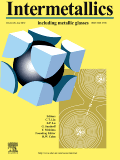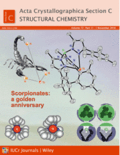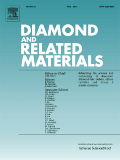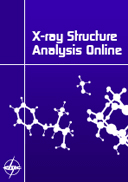
PHYSICS AND CHEMISTRY OF MINERALS
Scope & Guideline
Illuminating the Science Behind Mineral Properties
Introduction
Aims and Scopes
- High-Pressure and High-Temperature Studies:
Research involving the behavior of minerals under extreme conditions, including phase transitions, elastic properties, and structural changes. - Characterization Techniques:
Utilization of advanced analytical techniques such as X-ray diffraction, Raman spectroscopy, and electron microscopy to study mineral structures and properties. - Thermodynamic Properties:
Investigation of the thermodynamic behavior of minerals, including heat capacity, thermal expansion, and phase diagrams. - Crystal Chemistry and Solid Solutions:
Exploration of the crystal structures, site occupancy, and stability of minerals, particularly in relation to solid solutions and compositional variations. - Mineral Transformations:
Studies focused on the kinetics and mechanisms of mineral transformations, including thermal treatment and pressure-induced changes.
Trending and Emerging
- Advanced Computational Methods:
There is a growing trend toward the use of computational techniques, such as density functional theory and molecular dynamics simulations, to predict mineral behavior and properties under various conditions. - In Situ Characterization Techniques:
The use of in situ methods for studying minerals at high pressures and temperatures is gaining traction, allowing for real-time observation of mineral transformations and behaviors. - Hydrogen and Water in Minerals:
Research focusing on the role of hydrogen and water in mineral structures and their implications for geological processes is emerging as a significant theme. - Nanomechanics and Size-Dependent Properties:
Studies on the mechanical properties of minerals at the nanoscale, including their behavior under stress and strain, are increasingly relevant in contemporary mineral research. - Interdisciplinary Approaches:
There is an uptick in interdisciplinary studies that integrate geology, materials science, and physics to provide comprehensive insights into mineral systems.
Declining or Waning
- Environmental and Geochemical Studies:
There has been a noticeable decrease in papers focusing on environmental aspects and geochemical processes related to mineral behavior, possibly due to a shift towards more experimental and theoretical studies. - Biological Interactions with Minerals:
Research investigating the interactions between minerals and biological systems is becoming less common, indicating a potential waning interest in bio-mineralogy within the journal. - Mineral Utilization and Industrial Applications:
Topics related to the industrial applications of minerals, such as their use in technology or materials science, appear to be less frequently addressed in recent publications.
Similar Journals

Journal of Metals Materials and Minerals
Advancing Knowledge in Metallurgy and Materials ScienceJournal of Metals Materials and Minerals (ISSN: 0857-6149) is a renowned academic publication dedicated to the interdisciplinary fields of metallurgical science, materials engineering, and mineralogy. Published by Chulalongkorn University, Metallurgy & Materials Science Research Institute in Thailand, this journal serves as a pivotal platform for researchers to disseminate their findings and explore innovative applications related to metals, ceramics, polymers, and biomaterials. Although the journal does not currently adopt an open-access model, it provides insightful content that facilitates knowledge sharing among professionals and academics alike. The journal has established its credibility with impressive Scopus ranking percentiles, particularly in categories such as Metals and Alloys and Ceramics and Composites. With an emphasis on advancing the understanding of materials science from 2017 to 2024, the Journal of Metals Materials and Minerals remains an essential resource for those striving to contribute to and stay informed about the latest trends and breakthroughs in these dynamic fields.

Crystals is a premier open-access journal, published by MDPI since 2011, that focuses on the multidisciplinary fields of chemical engineering, condensed matter physics, inorganic chemistry, and materials science. With its E-ISSN 2073-4352, the journal is headquartered in Switzerland, and actively contributes to the global scientific community by facilitating the dissemination of high-quality research. Ranking in the Q2 quartile across multiple categories, including Chemical Engineering (miscellaneous) and Materials Science (miscellaneous) for 2023, Crystals provides a platform for innovative studies that span from fundamental research to practical applications. The journal's commitment to open access ensures that groundbreaking findings are readily available to researchers, professionals, and students alike, fostering an environment of collaboration and knowledge sharing that is essential in advancing the scientific understanding of crystalline materials.

International Journal of Minerals Metallurgy and Materials
Elevating Standards in Minerals and Materials ResearchThe International Journal of Minerals Metallurgy and Materials, published by SPRINGER, stands as a prominent forum in the fields of minerals, metallurgy, and materials science. With an ISSN of 1674-4799 and an E-ISSN of 1869-103X, this journal has been disseminating high-quality research since its inception in 2009 and will continue to publish until 2024. Based in China, this journal supports Open Access options, maximizing the reach and impact of scholarly work. Enhanced by its impressive Scopus rankings, it holds a Q2 position in Geochemistry and Petrology and a Q1 ranking in Materials Chemistry, Mechanical Engineering, Mechanics of Materials, and Metals and Alloys for 2023. Such accolades reflect its continual commitment to advancing knowledge in these disciplines, making it essential reading for researchers, professionals, and students aiming to stay abreast of contemporary developments and innovative solutions in materials science.

INTERMETALLICS
Driving Discovery in the World of IntermetallicsINTERMETALLICS, a prestigious journal published by ELSEVIER SCI LTD in the United Kingdom, has been a vital resource in the fields of Materials Science, Mechanical Engineering, and Chemistry since its inception in 1993. Renowned for its rigorous peer-review process and commitment to high-quality research, this journal enjoys an impressive position within the top quartile (Q1) rankings of its categories, signifying its influence and esteem in the academic community. With a particular emphasis on the study of intermetallic compounds and their applications, INTERMETALLICS attracts groundbreaking research and innovative contributions that push the boundaries of knowledge in metals and alloys, as well as mechanics of materials. Researchers looking for a platform to disseminate cutting-edge findings will find this journal an exemplary choice, further enhanced by its commendable Scopus rankings that illustrate its widespread recognition and relevance. Though it does not currently offer Open Access options, the journal remains committed to advancing the field through selective publication of impactful research, making it an essential reference for researchers, professionals, and students alike interested in the dynamic interplay between materials and engineering.

ACTA CRYSTALLOGRAPHICA SECTION C-STRUCTURAL CHEMISTRY
Connecting Researchers Through Structural InsightsACTA CRYSTALLOGRAPHICA SECTION C-STRUCTURAL CHEMISTRY is a respected journal in the fields of condensed matter physics, inorganic chemistry, and materials chemistry, published by the International Union of Crystallography. With an extensive history dating back to its inception in the late 1980s, this journal serves as a significant platform for researchers to disseminate high-quality research on structural chemistry, focusing on the synthesis and characterization of crystalline materials. Despite currently holding a Q4 ranking across multiple academic categories, it remains an essential resource for those engaged in these scientific disciplines, facilitating dialogue and collaboration among experts. The journal's commitment to publishing innovative studies ensures that it continues to contribute to the advancement of knowledge in its field. Although it does not offer Open Access, the journal is dedicated to maintaining rigorous peer-review standards, making it a reliable source for scholars and practitioners alike. Located in the United States, ACTA CRYSTALLOGRAPHICA SECTION C is a pivotal part of the global crystallography community.

RUSSIAN JOURNAL OF INORGANIC CHEMISTRY
Unveiling Innovations in Materials ChemistryThe Russian Journal of Inorganic Chemistry is a distinguished publication that delves into the fundamental and applied aspects of inorganic chemistry. Published by MAIK Nauka/Interperiodica/Springer, this journal has established itself as a vital resource for researchers, professionals, and students alike, contributing significantly to the fields of Inorganic Chemistry, Materials Science, and Physical and Theoretical Chemistry. With an ISSN of 0036-0236 and an E-ISSN of 1531-8613, the journal is indexed for easy access and citation. Though the journal currently operates under a subscription model, its commitment to disseminating high-quality research and fostering scientific discourse remains steadfast. The journal has been maintaining a consistent record since its inception, and its positioning in the Q3 quartile across various chemistry categories in 2023 underscores its relevance in the academic community. As it continues through its converged years from 1996 to 2024, the Russian Journal of Inorganic Chemistry plays a pivotal role in enhancing the understanding and advancement of inorganic chemistry, making it an indispensable tool for anyone engaged in this dynamic field.

CRYSTENGCOMM
Driving excellence in crystallization and materials science research.CRYSTENGCOMM is a distinguished journal published by the Royal Society of Chemistry, dedicated to advancing the field of crystallization and crystal engineering. With its impact factor consistently among the top tier in its category, CRYSTENGCOMM serves as an essential platform for researchers, professionals, and students in Chemistry, Condensed Matter Physics, and Materials Science. The journal has successfully maintained its relevance and influence since its inception, showcasing pioneering research from 1999 to 2024, with a commendable Q2 ranking in the latest evaluations. This accessibility to crucial developments in crystallization facilitates knowledge transfer across disciplines and enhances collaboration within the scientific community. Although it operates under a subscription model, the journal remains committed to disseminating cutting-edge research and fostering innovation in the field. For more information or to submit your research, please visit the Royal Society of Chemistry's website.

PHYSICS OF METALS AND METALLOGRAPHY
Pioneering Research in Condensed Matter and MetallographyPhysics of Metals and Metallography, published by MAIK Nauka/Interperiodica/Springer, is a respected journal dedicated to the study of the physical properties of metals and their metallographic analysis, offering invaluable insights for researchers, professionals, and students in the fields of condensed matter physics and materials chemistry. With an ISSN of 0031-918X and an E-ISSN of 1555-6190, the journal has a rich history that spans from 1970 to 2024, reflecting a long-standing commitment to advancing knowledge in this vital area of materials science. Although it currently does not offer Open Access options, its strong placement in the academic landscape is underscored by its Q3 ranking in both Condensed Matter Physics and Materials Chemistry, according to 2023 metrics, and a Scopus ranking that places it within the competitive percentile of its fields. The journal is particularly important for those engaged in the cutting-edge research and technological applications of metals and alloys, making it an essential resource for anyone looking to deepen their understanding or contribute original findings to this dynamic discipline.

DIAMOND AND RELATED MATERIALS
Advancing knowledge in materials science and engineering.DIAMOND AND RELATED MATERIALS, published by Elsevier Science SA, serves as a premier international platform for the dissemination of high-quality research in the fields of materials science, electrical engineering, and chemistry, with a specialized focus on diamond and its related materials. With an ISSN of 0925-9635 and an E-ISSN of 1879-0062, this journal has established itself within the top quartiles, reflecting its influential contribution to the scientific community, particularly in the categories of Chemistry (miscellaneous) and Electrical Engineering, among others. The journal's wide scope encompasses both theoretical and applied aspects of diamond research, making it an essential resource for professionals and academics alike. The current rankings position it favorably within its respective disciplines, with a notable 79th percentile in General Physics and Astronomy and strong standings in related categories. Although it does not offer open access, researchers can stay informed of cutting-edge advancements and methodologies through its comprehensive articles and reviews, enriching the wider discourse in advanced materials research.

X-Ray Structure Analysis Online
Exploring Innovative Techniques in Analytical ChemistryX-Ray Structure Analysis Online is a pivotal academic journal dedicated to the field of analytical and materials chemistry, published by the Japan Society for Analytical Chemistry. Established in 2009, this journal serves as a vital platform for researchers and professionals dedicated to advancing the understanding of X-ray structural analysis techniques and their applications. With ISSN 1883-3578, it operates under rigorous peer-review standards, promoting high-quality research contributions. While the journal is currently categorized in the Q4 quartile for both Analytical Chemistry and Materials Chemistry, its focus on cultivating a deeper understanding of material properties through X-ray analysis remains crucial for ongoing developments in these fields. By providing an accessible outlet for innovative studies, X-Ray Structure Analysis Online supports the academic community in overcoming the challenges of a rapidly evolving scientific landscape. It is particularly valuable for those engaged in material and analytical research, offering insights that contribute to both theoretical foundations and practical applications.